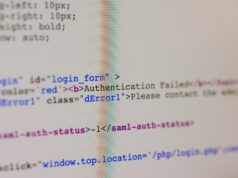In the ever-evolving landscape of our digital lives, where the boundaries between the physical and virtual blur, the concept of property has taken on a new form. No longer confined to tangible assets, our digital resources–cryptocurrencies, personal information, and online accounts–have become prized possessions, vulnerable to an intricate web of social manipulation strategies. The art of safeguarding these assets demands not only technical knowledge but also an understanding of the psychological exploitation techniques employed by those who seek to compromise our security.
Security is no longer a mere afterthought; it has become a fundamental necessity in protecting our digital realms from deceptive practices that exploit human trust. The tactics used by cybercriminals often hinge on the subtleties of human interaction, turning ordinary users into unwitting participants in their schemes. By recognizing these manipulative strategies, we equip ourselves with the means to defend against the threats that loom over our online existence.
As stewards of our digital assets, we must embrace a holistic approach to security–one that transcends mere technical defenses and ventures into the realm of human behavior. This involves cultivating an awareness of potential risks while adopting robust practices for safeguarding our information. In this exploration, we will delve into the various techniques that can fortify our defenses, ensuring that our online resources remain secure against the relentless tide of malicious intent.
Through careful analysis and proactive measures, we can turn the tables on those who would seek to manipulate and deceive us. As we navigate this complex terrain, let us remember that each step taken towards understanding and implementing effective strategies serves not only to protect our assets but also to reinforce the very fabric of trust that binds us together in the digital age.
Understanding Social Engineering Tactics
In the vast digital landscape where our assets reside, the shadows of social engineering loom ever closer. This intricate tapestry of manipulation is woven from threads of human psychology and cunning deception. As we traverse this online world, it becomes imperative to understand these tactics–strategies that exploit trust and familiarity to breach our defenses. The very essence of safeguarding our resources lies in recognizing these deceptive practices before they take root.
To defend our digital property, we must first arm ourselves with knowledge. Social manipulation operates on the premise of exploiting vulnerabilities inherent in human nature–curiosity, fear, and the desire for connection. These psychological techniques are not merely tricks; they are calculated moves designed to bypass traditional security measures. By acknowledging these strategies, we can begin to formulate a robust approach for protecting our online assets against such insidious incursions.
The importance of a proactive stance cannot be overstated. Defending our cyber property requires a multifaceted strategy that includes education, vigilance, and adaptive practices. It is crucial to engage in ongoing training to recognize the subtle signs of exploitation. An informed individual is less likely to fall prey to phishing schemes or pretexting, which prey on unsuspecting users through crafted narratives that seem innocuous at first glance.
Moreover, implementing strong security protocols can serve as a formidable barrier against potential threats. Two-factor authentication, regular software updates, and encryption are essential tools in our arsenal. However, technology alone cannot shield us from every danger; it is the synergy between robust digital practices and an acute awareness of psychological tactics that fortifies our defenses. This harmonious blend creates a resilient framework for safeguarding our digital assets.
Ultimately, the battle against social engineering is one fought not only with tools but also with understanding and empathy. Recognizing the human element in this equation allows us to cultivate a culture of security within our communities. By sharing knowledge and experiences related to deceptive practices, we empower each other to navigate the complexities of our interconnected lives with greater confidence and resilience–a shared commitment to protecting what is rightfully ours in this boundless digital expanse.
Common Techniques Used by Attackers
In the vast landscape of digital interaction, where assets are often mere shadows of their physical counterparts, attackers employ a variety of techniques to exploit vulnerabilities. The art of social manipulation is at the forefront of their tactics, allowing them to weave intricate narratives that ensnare their victims. These strategies are not merely technical; they delve deep into the psychology of trust and urgency, creating a fertile ground for deceit. Understanding these deceptive practices is crucial for anyone wishing to defend their online resources against the ever-present threat that looms in the cyber ether.
To protect your digital assets, it is essential to adopt a multifaceted approach grounded in awareness and vigilance. Strategies for safeguarding your property should include educating oneself about the common deceitful approaches used by attackers, from phishing emails that masquerade as legitimate communications to fake websites designed to capture sensitive information. By remaining informed and skeptical, individuals can create a robust barrier against the psychological exploitation techniques that these aggressors wield with such finesse. The security of one’s online resources hinges on this proactive stance, allowing one to navigate the digital world with both caution and confidence.
Psychological exploitation techniques represent a dark art that preys on human emotions–fear, greed, and curiosity become tools in the hands of those who wish to misappropriate your assets. Attackers often craft elaborate narratives that resonate with the fears and desires of their targets, drawing them into traps disguised as opportunities. Thus, defending against these tactics requires not just technological safeguards but also an understanding of human psychology. By recognizing the emotional triggers utilized in these manipulative strategies, individuals can fortify their defenses and thwart potential breaches before they occur.
In a realm where deceptive practices abound, it is imperative to cultivate an unwavering commitment to security. Establishing clear protocols for verifying communications and transactions serves as a cornerstone for defending your cyber property. Regularly updating passwords and using multifactor authentication can provide additional layers of protection against those who seek to infiltrate your online space. Ultimately, the act of defending one’s digital assets is not merely about implementing tools; it is about fostering a culture of security that values awareness and resilience in the face of ever-evolving threats.
Signs of Social Engineering Attacks: Understanding the Threat
In the ever-evolving landscape of the digital realm, signs of social engineering attacks often lurk in the shadows, waiting for the unsuspecting to fall prey. These deceptive practices are not just fleeting moments of trickery; they are calculated strategies designed to exploit human psychology. The manipulation involved in these tactics is profound, targeting the very core of our trust and emotions. Recognizing these signs requires not only vigilance but an understanding of how social dynamics operate in an online environment.
When we discuss social manipulation strategies, we must delve into the heart of human interaction. Attackers employ various techniques to create a facade of legitimacy, often masquerading as familiar figures or institutions. They weave narratives that resonate with our fears and desires, compelling us to act against our better judgment. To defend your digital assets effectively, one must cultivate a healthy skepticism toward unsolicited communications and verify their authenticity before engaging. This proactive approach serves as a first line of defense against those who seek to exploit vulnerabilities.
Psychological exploitation techniques play a significant role in this digital cat-and-mouse game. The attackers understand that fear, urgency, and curiosity can cloud our decision-making processes. By crafting messages that tap into these emotions, they create an environment ripe for deception. Safeguarding your online resources means developing an awareness of these manipulative tactics and training yourself to remain composed in the face of potential threats. It is crucial to remember that security is not merely a set of tools but a mindset cultivated through continuous learning and adaptation.
As we explore deceptive practices for security, it becomes clear that defending your cyber property requires more than just technological solutions. It involves fostering an ecosystem where individuals are empowered to recognize and resist manipulation. Education plays a pivotal role in this endeavor, equipping users with knowledge about common scams and how to identify them. Regularly updating passwords, employing two-factor authentication, and maintaining awareness of current threats can all serve as significant deterrents against would-be attackers.
In this battle for our digital assets, the strategies we implement must be both adaptive and resilient. Just as nature evolves to survive, so too must our defenses against social engineering attacks. This means staying informed about emerging trends in cyber threats while continuously assessing and refining our protective measures. A well-rounded approach combines technology with human intuition–a synergy that can thwart even the most cunning adversaries.
Ultimately, protecting your online resources is a journey rather than a destination. It requires ongoing commitment and diligence as you navigate the complexities of digital life. The warmth of community support, coupled with shared knowledge, can transform vulnerability into strength. By understanding the tactics employed by those who seek to manipulate us and equipping ourselves with effective strategies for defense, we can safeguard not only our assets but also the integrity of our digital existence in an increasingly interconnected world.
Defensive Strategies for Protection
In the vast, sprawling landscape of the digital realm, where the air is thick with whispers of deception and shadows of manipulation, the need for security becomes paramount. Each keystroke we make is a step upon the fertile soil of our digital property, yet beneath it lies a labyrinth of tactics employed by those who would exploit our vulnerabilities. To defend our assets effectively, we must first acknowledge the psychological exploitation techniques that serve as the undercurrents in this murky ocean of online interaction.
To safeguard our resources, we must cultivate an awareness that transcends mere technical knowledge. It is not enough to install firewalls or encryption; one must also engage in practices that fortify our minds against social manipulation. The art of defending against such exploitation requires a keen understanding of human behavior–a recognition that behind every phishing email or deceptive message lies a strategy designed to prey upon our trust and curiosity. By familiarizing ourselves with these tactics, we arm ourselves with the tools necessary to navigate this treacherous terrain.
In the heart of this defensive journey lies the importance of community. Just as farmers band together against blight and drought, so too must we unite in our efforts to protect our online assets. Sharing knowledge and experiences can illuminate the dark corners where deceptive practices thrive. A collective vigilance can serve as a powerful shield against those who seek to breach our defenses, transforming individual efforts into a robust network of security that safeguards not only personal property but also the integrity of our communal digital environment.
Moreover, it is essential to establish strategies that go beyond reactionary measures. Proactive defense is akin to tending a garden; it requires consistent effort and foresight to prevent weeds from taking root. Regularly updating passwords, employing two-factor authentication, and engaging in routine security assessments are all vital techniques that bolster our cyber defenses. By embedding these practices into the fabric of our online lives, we create an ecosystem resilient to the invasive tactics of exploitation.
Yet, amidst these defensive maneuvers, one must remain vigilant against complacency–a silent adversary that can undermine even the most fortified strategies. The landscape of social engineering evolves perpetually; new manipulative tactics emerge as swiftly as old ones fade into obscurity. Thus, ongoing education and adaptation are crucial components in the fight to protect our digital assets. We must approach this endeavor not merely as a series of tasks but as a lifelong commitment to understanding and thwarting those who would seek to deceive us.
In conclusion, the defense of our digital property is an intricate dance between knowledge and vigilance, strategy and community. By embracing an informed approach to security and committing ourselves to continuous learning, we can effectively shield our online resources from psychological exploitation. As we navigate this complex world together, let us remember that each action taken in defense is not just a solitary effort but part of a larger symphony aimed at safeguarding what is rightfully ours in this ever-evolving digital age.
Conclusion: The Imperative of Digital Security
In this era of rapid technological advancement, the protection of our digital assets has become not merely a precautionary measure but an essential practice for survival. The tactics employed by those who seek to exploit vulnerabilities in our online resources are as varied as they are insidious. Understanding these tactics is the first step in safeguarding our property from manipulation and psychological exploitation. It is within this understanding that we find the strength to defend what is rightfully ours.
The strategies we adopt for security must be comprehensive and proactive. By recognizing the deceptive practices that permeate the digital landscape, we equip ourselves with the tools necessary to protect our online resources effectively. Our journey toward securing our cyber property demands a commitment to continuous learning and adaptation, as the nature of these threats evolves with each passing day.
Best Practices for Defending Your Digital Assets
- Awareness: Stay informed about common social engineering tactics and psychological exploitation techniques.
- Education: Regularly educate yourself and your team on best practices for digital security.
- Multi-Factor Authentication: Implement multi-factor authentication wherever possible to add an extra layer of security.
- Regular Updates: Keep all software and systems updated to protect against known vulnerabilities.
- Phishing Simulations: Conduct phishing simulations to train users on recognizing deceptive communications.
- Incident Response Plan: Develop a robust incident response plan to address potential breaches swiftly and efficiently.
As we navigate this complex digital landscape, let us remember that defending our assets requires both vigilance and resilience. By combining sound strategies with a commitment to safeguarding our online environments, we can significantly diminish the risks posed by those who would seek to exploit our vulnerabilities. In doing so, we not only protect our resources but also foster a culture of security that benefits us all.














